Chart Variations - Illustrations
Lesson 16
Lesson Objectives:
-
Recognize a variety of fertility chart patterns.
-
Obtain an awareness of how interpretations are made on a variety of chart patterns.
Major Points in this Lesson:
Your previous lesson discussed ways in which your chart may differ from the ideal. This lesson provides some illustrations so that you can visualize a variety of the most common, non-ideal chart patterns, even those that may be a bit more challenging to interpret.
Slow Rise
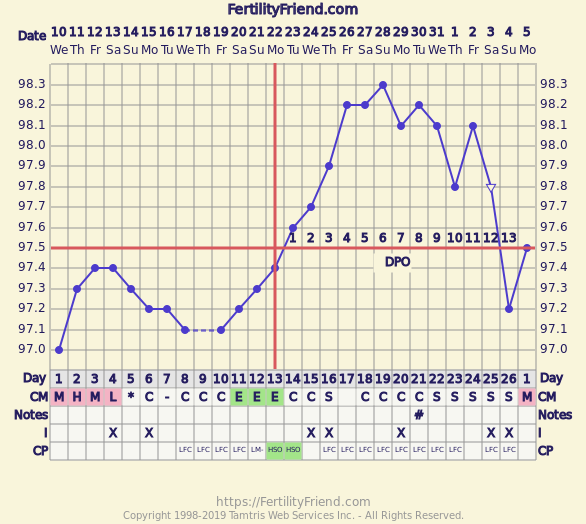
This chart shows a slow
rise pattern with ovulation detected on cycle day 13. Though the
temperatures rise incrementally, the ovulation date is fairly clear
because multiple signs were observed.
Slow Rise
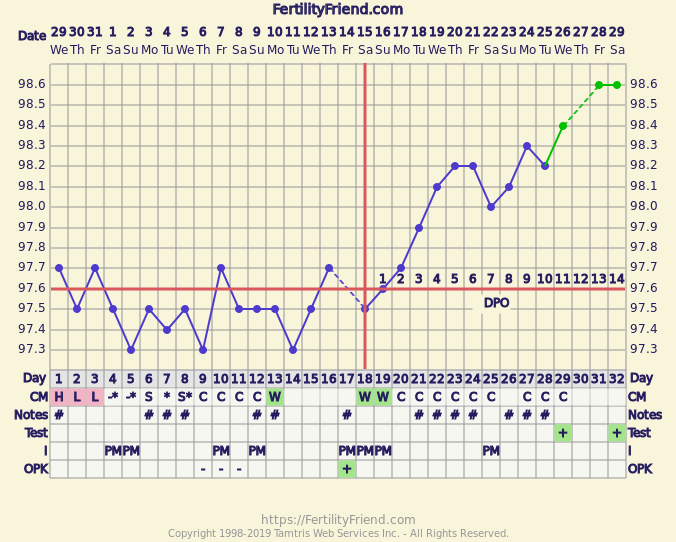
This chart shows a slow rise pattern with ovulation detected on cycle day 18. The precise ovulation date is often unclear with a slow rise pattern. Cycle day 19 is also a possible ovulation date for this cycle. Though the temperatures do not reach a sustained higher level until cycle day 21, ovulation can be detected because the OPK observations correlate with CD 18. Intercourse was well-timed all through the fertile phase and a first positive pregnancy test is recorded at 11 days past ovulation.
Slow rise and erratic temperatures
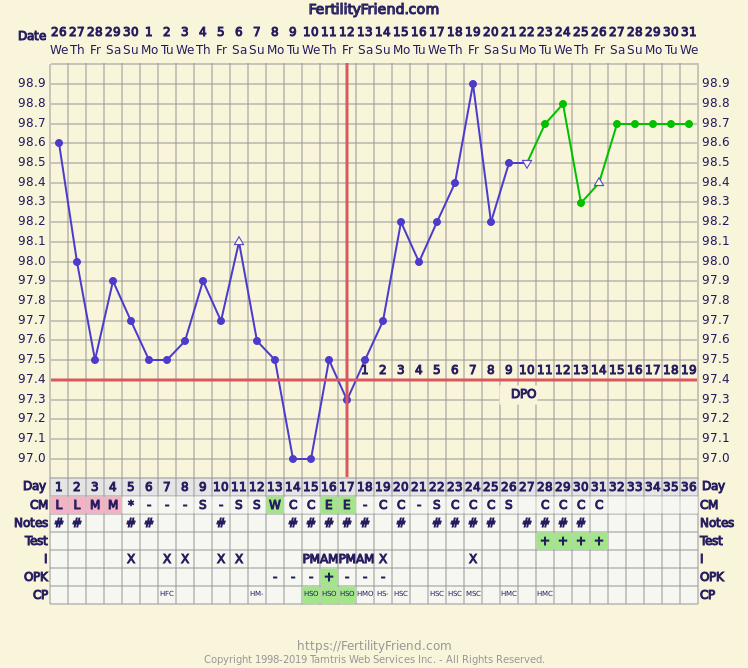
This chart shows a slow rise pattern with ovulation detected on cycle day 17. Though temperatures do not reach a sustained higher level until after cycle day 19, ovulation can be confirmed for cycle day 17 because of OPK and cervical fluid observations. Intercourse is timed well all through the fertile phase and a positive pregnancy test is first recorded at 11 days past ovulation.
Fallback Rise
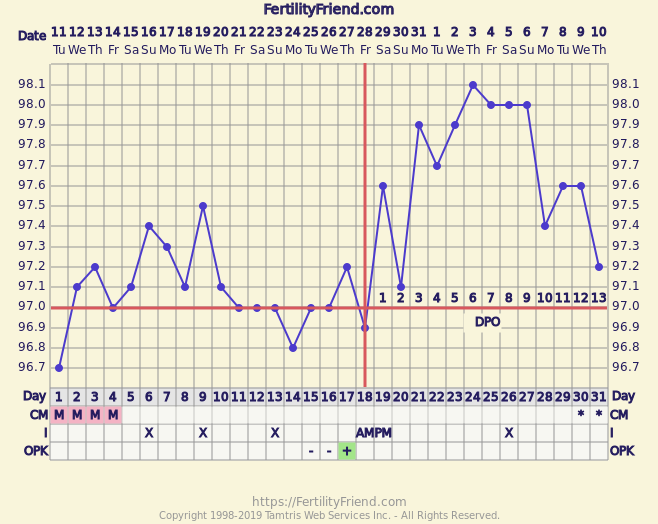
The chart above shows ovulation on cycle day 18, confirmed by a positive OPK and a thermal shift with a fallback rise pattern. The luteal phase is 13 days.
Fallback Rise
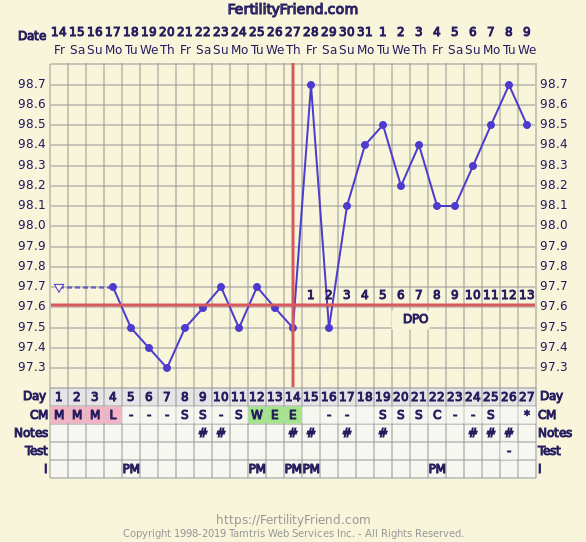
The chart above shows a likely fallback rise pattern with ovulation on cycle day 14. Temperatures stay elevated for 13 days.
Fallback Rise
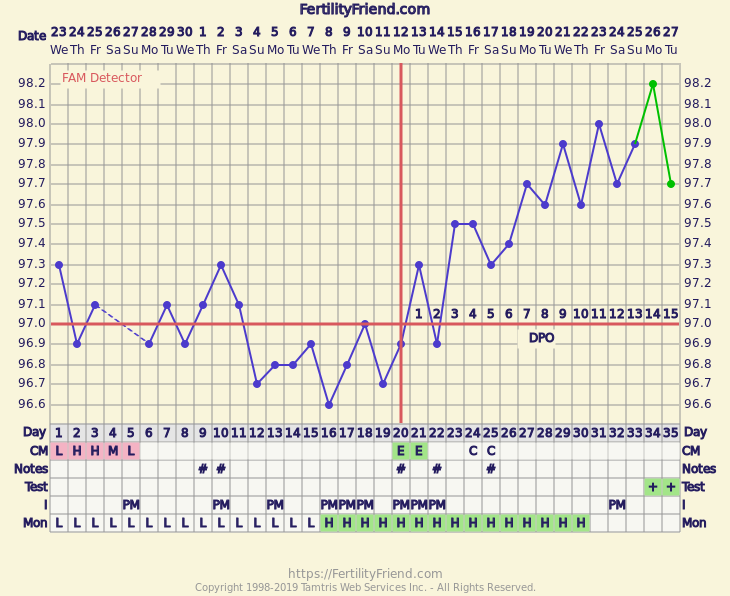
The chart above shows ovulation detected on cycle day 20 with a possible fallback rise pattern. It is also possible that ovulation was cycle day 22 with a fluke high temperature on cycle day 21. Either way, intercourse is well-timed and the pregnancy test is positive at 14 days past ovulation.
Erratic Temperatures
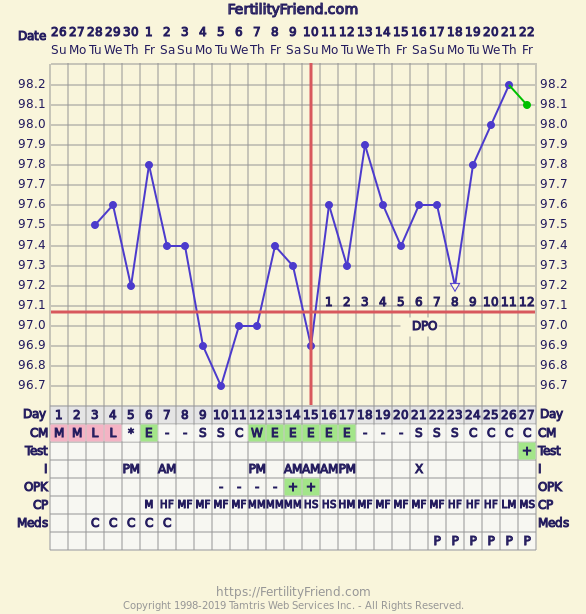
The chart above shows erratic temperatures. Some of the earlier temperatures may have been in the higher range due to the Clomid taken on days 3-7. This may be partially obscuring a clearer biphasic pattern. (Clomid can cause temperatures to be higher on the days it is taken). Still, ovulation can be clearly detected on this chart as temperatures do rise to a higher level after ovulation and OPK results are positive on days 14 and 15.
Erratic Temperatures
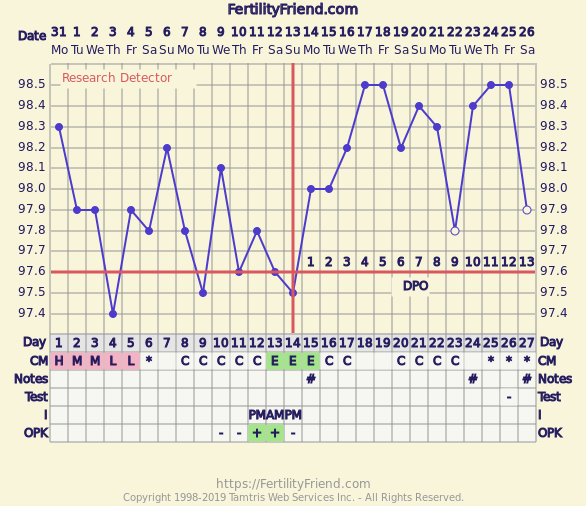
The erratic temperatures on this chart would make it difficult to pinpoint ovulation without the additional data from the OPK results. Without the OPK results, it would look like ovulation was possibly on cycle day 16. With all signs available, however, we can see cycle day 14 is the most likely day and we can see a luteal phase of 13 days.
Erratic Temperatures
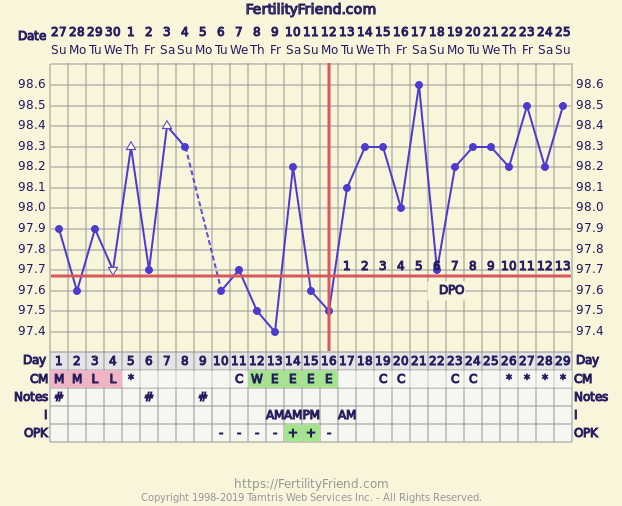
The chart above also displays erratic temperatures. Without the OPK results and cervical fluid observations, it would be nearly impossible to identify the ovulation date with certainty.
Ambiguous shift
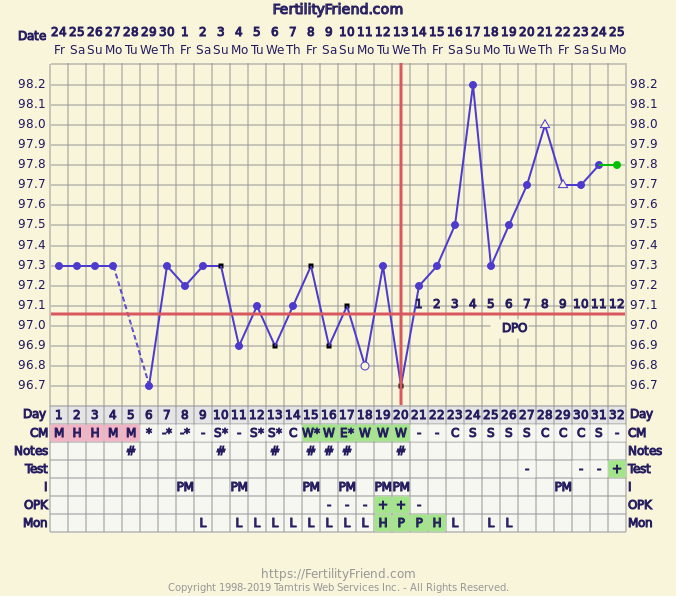
The chart above shows an ambiguous thermal shift. Without the added data from the cervical fluid observations, ovulation prediction kit and fertility monitor, it would be impossible to pinpoint ovulation to a single day on the chart, though it would be clear that ovulation occurred between cycle days 20 and 22.
Ambiguous shift
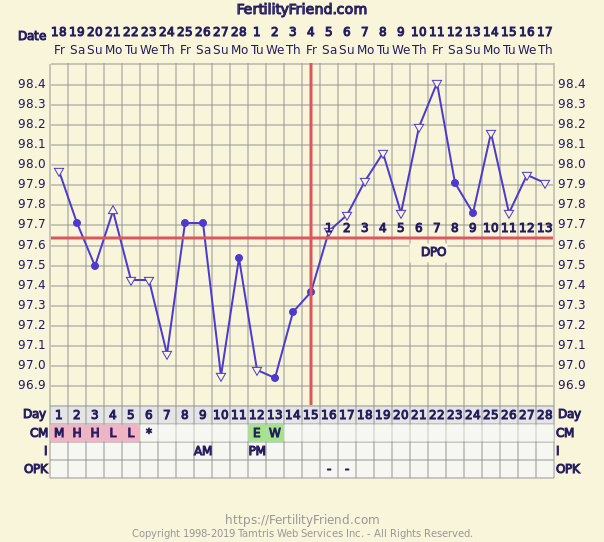
On this chart, ovulation may be anywhere from cycle day 13 to cycle day 17. Though pinpointing the day precisely is not possible, it is clear that ovulation did occur.
Going
further:
To see more patterns, explore FertilityFriend.com's
Chart Gallery. You can search it by keywords and other criteria.
Fun and Educational:
Practice your interpretation skills with FertilityFriend.com's Interpretation Game.
Next Lesson: Pregnancy Patterns: Identifying Signs of Pregnancy on your Chart
Note: This lesson does not have a quiz.

